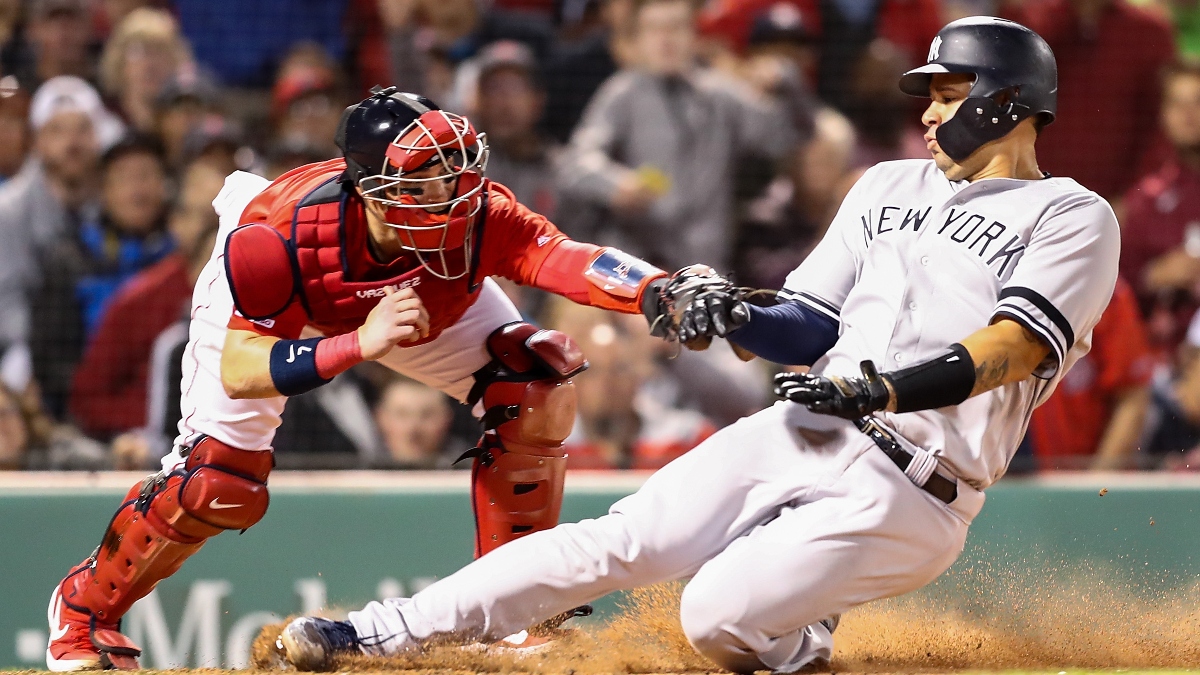
Adam Glanzman/Getty Images. Pictured: Christian Vazquez and Gary Sanchez
When betting on baseball, you’ll be faced with three standard options: the moneyline, over/under and run line.
The moneyline is the simplest of the three wagers; you’re simply betting on which team will win (more here on how to read American moneyline odds).
An over/under bet requires you to pick whether the game will finish with more runs than the number listed by the sportsbook.
As for the run line, you’re betting on a team’s margin of victory (or defeat).
_BookPromo=351
What Is the Run Line in Baseball Betting?
The run line is baseball’s version of point spread betting, and allows a bettor to wager on whether the favorite will beat the underdog by more than a run or whether the underdog will keep the game within a run. The run line is almost always -1.5 and +1.5.
For that reason, betting the run line can be attractive in instances where bettors would like an increased payout on the better team, or in times where they’d like the cushion of being able to lose by a run, and still win their bet.
Take the following example.
| Team | Moneyline | Run Line |
|---|---|---|
| Red Sox | +120 | +1.5 (-170) |
| Yankees | -130 | -1.5 (+150) |
In this case, if you want to bet the Yankees to win the game, you’d be laying a -130 — so a $130 wager would return a win of $100, or a $13.10 wager would return $10.
But, if you’re willing to bet that the Yankees will win by more than a run, you could wager just $10 and win $15, giving you both a wager on the better team, and a plus-money payout.
You might also find run line betting useful in games where the moneyline is far from even, in which case you’d be able to either take the superior team at a more reasonable price, or get a one-run cushion on the worse team while still maintaining a solid payout.
| Team | Moneyline | Run Line |
|---|---|---|
| Giants | +240 | +1.5 (+130) |
| Dodgers | -280 | -1.5 (-150) |
Here, a confident Dodgers bettor would be able to take a much more reasonable -150 price by going with the run line. Giants bettors, meanwhile, would be able to win their bet on a one-run loss while still being paid out at a plus-money price.
Should You Bet the Run Line or Moneyline?
As you might expect, there isn’t an obvious answer to this question. After all, oddsmakers are pretty good at setting lines that will result in their own profit over a long period of time.
But for those curious, here’s a comparison between all run line and moneyline bets over the past 15 seasons (since 2005) in terms of their return on investment (ROI).
| Team | Moneyline | Run Line |
|---|---|---|
| Favorites | -1.9% | -2.0% |
| Underdogs | -1.7% | -2.0% |
In the case of both favorites and underdogs, the ROI takes a slight hit by going from moneyline to run line, which is to be expected as oddsmakers tend to take a bigger cut of run line bets in the form of higher vig.
In the Red Sox-Yankees game from above, for example, the 10-cent juice on the moneyline (-130 vs. +120) became 20-cent juice when looking at the run line (-170 vs. +150).
Baseball Bonus Offers
_BookPromo=49
_BookPromo=245
_BookPromo=24
_BookPromo=19